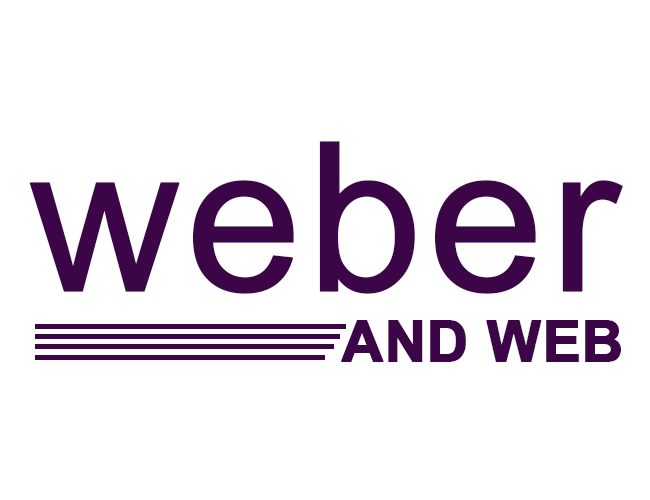Table of Contents
- Changing Perspectives in the Advertising Landscape
- Core Functions of Advertising Agencies
- Collaboration Strategies for Stronger Campaigns
- Adapting to Digital Shifts and Consumer Behavior
- Elevating Creativity Through Data-Driven Decisions
- Real-Life Examples and Success Stories
- What’s Ahead for Advertising Agencies?
- Smart Partnerships for Smarter Campaigns
Contemporary advertising agencies are reestablishing the concept of creative collaboration to address the changing requirements of the digital-first world. The success now depends on the opportunity to combine data-driven precision with artistic innovation. The agencies collaborate with the brands to create exciting stories and leverage the insights acquired through the platform’s consumer behaviour, market trends, and algorithm. This collaboration enables real-time adaptive campaigns to engage and resonate with the intended audience effectively.
Agencies no longer operate in secluded agency creative powerhouses but in collaborative strategic partnerships with mobile-first design, social media engagement, influencer marketing and personalized content delivery. These groups use analytics, A/B testing, and efficiencies to justify creative drivers so an innovative and compelling message exists. Creative talents, data specialists, strategists, and media planners collaborate to build a brand, resulting in holistic brand development that can be realized through long-term brand equity.
Agencies embrace flexible workflows, free communication and cross-functional collaboration, which keeps the brands competitive in an evolutionary, fast-changing environment. The outcome is not merely appealing campaigns but lasting relevancy, enhanced consumer affiliation and quantifiable achievement based on a common creative and strategic ideal.
Changing Perspectives in the Advertising Landscape
The work the advertising agencies do is not the same as it was ten years ago. Today’s Agencies are viewed as strategic partners rather than merely creators of advertisements that help brands reach out to audiences and relate to them more profoundly and meaningfully. Agencies such as Boca Raton advertising agencies and their contemporaries are now expected to embrace a broader, more holistic perspective beyond traditional advertising, including everything from digital strategies to data science.These developments can be attributed to the dynamic world of both culture and technology, which demands higher levels of relevancy, integrity and personalization by the brands competing to win the hearts of the consumers.
With the ever-increasing expansion of the digital environment, agencies are under strain to be innovative but also dynamic, responsive, and attentive to the changing wants of consumers. The changes are redefining the functioning of creative teams, where they are being challenged to break down internal silos present in the past. As per the evolving nature of advertising agencies, the present most efficient agencies display characteristics of being deeply enmeshed into a client’s ecosystem and disseminating the knowledge and resources to achieve the objectives jointly. The change opens a new period of openness and understanding in organizations, brands and consumers.
Core Functions of Advertising Agencies
At the bottom, advertising agencies comprise a complex organization promoting brand communication. It is more than creating eye-catching graphics or smooth copy. Agencies conduct audience research without limits, using surveys, focus groups and detailed analytics to reveal actual behaviour insights. Such insights inform headline thoughts, campaign messages and media planning.
Each project has a discovery stage, where the agency immerses itself in the client’s business, environment, and target audience. The next step involves strategic planning by the teams to determine the key objectives and measures of success. Next, creative professionals, including copywriters, designers, strategists, and others, collaborate to design effective campaigns on as many platforms as possible, whether online through social media or through digital advertisements, broadcasts, or even events. Creative instinct and data dependence guide the agency’s efforts to ensure the campaigns convey as intended. This is one of the key reasons that make a good agency great, as it requires a balance between storytelling and analytics.
Collaboration Strategies for Stronger Campaigns
Any successful agency fundamentally relies on teamwork. With the combined power of different teams—creative, strategic, digital, and client-side—the agencies can produce and perform larger ideas more efficiently. Over the past years, technology has created a new method where agencies can encourage teamwork through virtual brainstorming, shared digital workspaces, or instant messaging, keeping everybody in the loop. These applications are bringing down distance and time restrictions, enabling and creating productive cross-boundary cooperation globally.
Organizations that promote open culture enlist the input of all stakeholders without necessarily involving the creative group. The fact that everyone can own a part of the final idea means that passion and responsibility are produced through regular feedback cycles, transparency, and inclusive workshops. One such scenario is limited to a creative director collaborating with a product manager in a client company to co-design solutions, make campaigns look good, and help achieve business objectives. The outcome is more contextually apt, emotionally intensive, and striking work for the audiences.
Adapting to Digital Shifts and Consumer Behavior
Digital transformation has fundamentally reshaped advertising, introducing new priorities beyond traditional print and TV. Today’s campaigns build on a mobile-first experience, dynamic social storytelling, and thoughtful influencer collaborations to effectively reach real audiences. Along with real-time data, personalization has become a must since it enables brands to customize messages to perfection. Advertising firms now need to master the art of integrating campaign aspects across the media and platforms to ascertain that all aspects of each contact are attentive and coherent. It is imperative to learn how algorithms may affect visibility on platforms such as Instagram, Facebook, and Google since they largely determine how, when, and to whom the messages are to be delivered and received.
To be adaptive, one should never stop upskilling and being open to new ideas. To have all the aspects of modern marketing touched, agencies hire experts in content production, paid media, and SEO, as well as novices in emerging technologies. Accepting automation and real-time data helps agencies to optimize campaigns during their running time by responding to feedback and performance trends in real-time. As discussed in the insights regarding adapting to digital trends in advertising, current-day agencies can interpret information and apply it to make creative decisions to achieve better and more efficient results.
Elevating Creativity Through Data-Driven Decisions
The biggest advertising happening nowadays is the one that occurs at the point of creativity and data analytics coming together as a dynamic duo that boosts creativity rather than limits. Data has become a creative accelerator, as opposed to a wall. The advanced analytics solutions used by modern agencies help them to understand consumers better—what, when, and why work behind a specific message. Such tools can capture data on heat maps of where users are clicking on a site to live sentiment analysis on social media when a campaign is being launched.
Such information is what agencies can use to create more intelligent and more emotionally connected campaigns. They can test the ideas and fine-tune the creative components through A/B testing at an early stage of the project, long before a large launching wave. This increases the level of success likelihood and allows creative teams to take more and wiser risks.
Importantly, data-driven advertising will not sacrifice artistic vision; it will only enhance it. Making the process user-driven will lead to more meaningful and effective emotional and strategic results because it improves situational awareness of user behaviours and preferences, ultimately resulting in more audience-focused campaigns that clearly demonstrate proven results.
Real-Life Examples and Success Stories
Case study examples in the real world are persuasive that a high degree of collaboration between brands and agencies can make their marketing campaigns very successful to the extent of being award-winning. As an example, one of the major retail brands aligned with its creative agency and created a user-generated photo contest online. Instead of a fake look, this brand asked its customers to share real pictures using its products; hence, online engagement grew by 30%. More importantly, it generated thousands of genuine customer stories, fostering a deeper emotional bond and increasing brand loyalty. The campaign marketed goods and provided the population a platform to better identify and relate to the brand.
In a different case, a technology company sought to reach younger consumers. With the right cooperation of the advertising agency, they created a campaign focused on hashtags and influencer promotion. The material was quite popular and became viral within several days; it surpassed expectations regarding user activity and new registrations.
These examples demonstrate the effectiveness of strong collaborations in enhancing creative strategies, generating measurable results, and fostering long-term relationships with audiences. Once each party can match intentions and perspectives, campaigns do not just promote them, but they become joint victories, which increase brand exposure and influence.
What’s Ahead for Advertising Agencies?
The future of advertising agencies is poised for ongoing transformation, shaped by shifting market dynamics, evolving client expectations, and rapid technological progress.Further flattening of organizational structures and preference for agile, cross-functional, and fast-responding teams should be the reality due to the high flexibility to respond to the consumers’ new trends and behavioural changes. It has the fluidity to provide more experimentation, quicker decision-making, real-time pivoting of campaigns, etc.
Technology will play a greater role in all the steps of the advertisement process. Machine learning and artificial intelligence will improve the data gathering, audience segmentation and data analytics of performances. In contrast, such technologies as augmented reality and virtual experiences will reinvent the storytelling process. The digital capabilities enhance campaign development and measurement to be more specific, personal and interactive as the capabilities grow.
Meanwhile, the talent mix of agencies will change. There will be an increasing convergence of producing creative data analysis, UX experts, social media planners, and technologists in the industry, and they will be creating integrated solutions. Agencies that promote lifelong learning, embrace tame concepts, and welcome multidisciplinary cooperation will be able to adapt and take the lead. Flexibility, novelty, and dedication to add value in new and vital ways are critical in this ever-changing environment.
Smart Partnerships for Smarter Campaigns
The choice of agency partner determines the success of brands. When selecting an agency with which they should collaborate, brands should look for an agency that has already established a reputation for openness, effective communication, and a combination of ardour for creativity and analytical accuracy. The foundation of a healthy partnership is based on agreeing on values, being aware of each other’s processes, and defining expectations.
1.Does the agency release the performance information on a regular and transparent basis?
2.Does it have a history of innovative but quantifiable performance?
3.Is the agency open to receiving feedback, and does it actively encourage participation?
With time, agencies that perform sustainable value can transform, educate and be part of their client’s teams. A common objective, respect towards each other, and communication are the basis for making visions a reality, despite the rotation of the markets and the changes in the media environment. Even in an era of rapid change in the digital environment, teamwork is helpful and the key to outstanding campaigns and lasting brand development.




